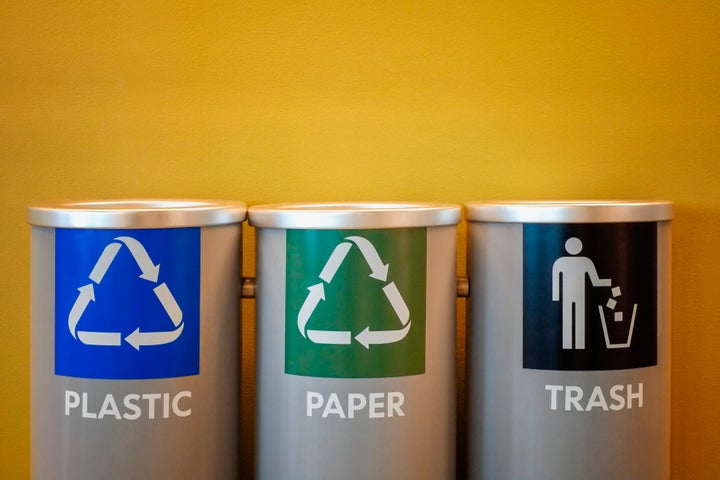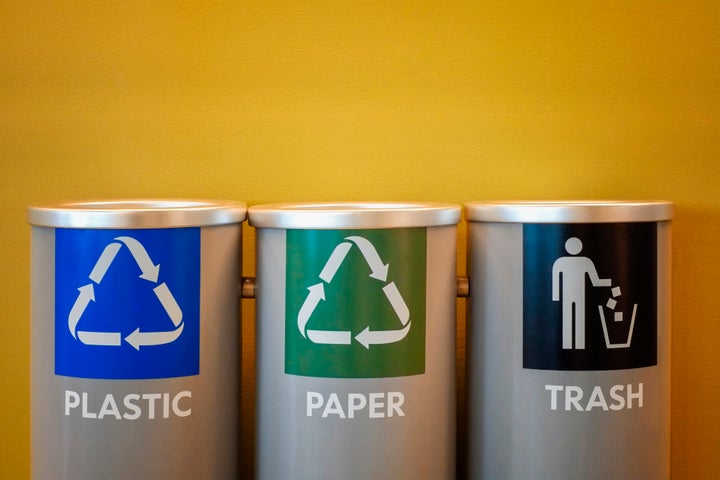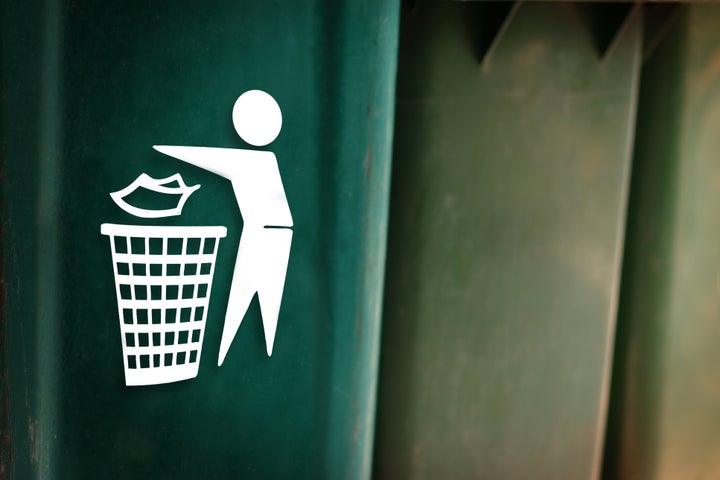Latest questions:
Trending questions:
Hot questions:
Tracking Cradle to Grave Lifecycle of Biodegradable Plastics in the Environment
In an effort to be more environmentally friendly or sustainable, many more biodegradable plastics are being introduced for our commercial use. How can these materials be tracked to ensure proper end of life disposal (i.e. in a reusable stream and not a landfill)?
15 answers
The degradation kinetics of biodegradable polymer is generally determined life cycle assessment methodology based on the evolution of carbon dioxide gas in aerobic or anaerobic conditions. Based on the experimental data, Life-cycle predicting simulation model has been developed by many researchers for different kind of polymeric packaging materials. Life-cycle of biodegradable polymers depend on materials use for making the polymer, composting conditions (oxygen content, temperature). Biodegradable polymers have higher biodegradability as compared to its non-biodegradable plastics counterpart.
All the biodegradable materials disposed to the environment can be managed through
- Proper waste management system (sorting the materials and decomposed or recycle them is a systematic manner)
- Active participation of the producing company in the process of recycling
- Building awareness to the user, so that they can sort the packaging materials post use
One last points, making the biodegradable plastics is not the end point and provide the solution, they must be well managed post disposal.
Recycling of packaging materials has seen rapid expansion over the last decades in a number of countries. Advances in technologies and systems for the collection, sorting and reprocessing of recyclable plastics are creating new opportunities for recycling, and as stated above with the combined actions of the public, industry and governments it may be possible to divert the majority of plastic waste from landfills to recycling over the next decades.
I agree with the comments of Samares Biswas. There are the technical challenges which are chemistry issues, and recycling issues relating to encouraging the right disposal action at the point of use. On the collection end, education of users is important. I work for a community services district which handles recycling, green waste among other services. We have a can for green waste, and a separate single stream for plastics/glass/paper/cardboard, and our biggest challenge is getting our residents to know which can to place the plastics, and which ones are recyclable or not. We use biocompostable or bioplastic utensils (corn starch) for outdoor events, yet most participants throw the biodegradable products in the garbage, somewhat defeating the purpose of reducing wastes to landfills. Yes, bioplastics do biodegrade in the landfill, but are agency is trying to reduce the volume we send to the landfill.
In Denmark all plastics are disposed to the same receptacle. I trust the Danish authorities that once the plastic is disposed of properly it will be recycled as best possibly. In a previous job I had followed the truck to ensure proper disposal as an audit of my recycler. Without dedicated waste receptacles or RFID chips in plastic containers, I am at a loss as to what would work.
For recycling purpose, currently the major polymers are labelled with an internationally recogonized number in containers or products. At least, biodegradable polymers should be added into this system. In theory, people can then identify whether this class of products, after first cycle of use, to be directly disposed into landfill (if already in partial degrdation and to be finally biodegraded) or recycled and reprocessed into another product line.
Completely agree with comments. The performance of biodegradable polymers upon time is rapidly decreasing, specially in post-consumer wastes conditions. Recycling can be an alternative for industrial scrap, but more difficult for post-consumer wastes. In that case, it is a more realistic alternative composting to avoid landfilling.
In those areas with collection bins for organic wastes biodegradable bags can play a kley role to promote separated collection of organic residues for composting. These biodegradable bags can be filled with organic residues and directly thrown in the organic wastes bins, avoiding theefore separation steps before composting, and promoting separate collection of organic wastes among citizens.
Nothing will work...rather is be must simply insure, if a biodegradable plastic is to be used, that it indeed passes the desired degradation tests in the targeted environments. Not all plastic will be biodegradable by necessity.
Indeed, recycling insures high performance plastics of any kind persistently find homes. Overall, biodegradable plastics cannot be used in many circumstances.
Anything done to improve planet Earth by increasing recycling is a good thing. Everyone needs to increase their knowledge about what items that can and can't be recycled. This education should start from the recycling company's themselves and be promoted by all levels of government. These programs will help the educated consumer make a better choice as to what product to buy and use that can and will be more Eco friendly. This should be accompanied with making recycling mandatory all across the USA and worldwide. This thought process of reduce, reuse, recycle will reduce the amount of garbage thrown away into our landfills. This hopefully leads to less trash thrown into the oceans, lakes, rivers, streams the world over. The manufacturing industry should help by reducing waste, using more recycled products in their manufactured products and designing more biodegradable product packaging. Some areas of the USA are making electrical energy through the use of burning trash to heat water. This changes to steam to turn turbines which generates electricity. This helps to reduce the amount of trash that is disposed of in landfills.
Americans generate 10.5 million tons of plastic waste a year but recycle only 1 or 2 % of it. An estimated 14 billion pounds of trash-most of it plastic -is dumped in the world's oceans every year.
Enough plastic is thrown away each year to circle the earth four times. We currently recover only five percent of the plastics we produce. The average American throws away approximately 185 pounds of plastic per year.
According to the EPA, plastics make up more than 12 percent of the municipal solid waste stream, “a dramatic increase from 1960, when plastics were less than one percent of the waste stream.” US residents are buying more plastic, and only about 8 percent of it gets recycled. The plastics industry rarely uses recycled plastics in the vast majority of their products, unlike the glass and metal industries. The recycling arrows stamped on plastic products and the cities that collect every type of plastic via their recycling programs lead people to believe that all plastic products are recyclable and being recycled, and that’s simply not true. Non-recyclable plastics are separated and landfilled.
Some plastics we know are toxic, such as #3, which is also known as PVC or vinyl. PVC contains phthalates and heavy metals, and creates dioxins when it burns. Other plastics contain Bisphenol-A (BPA), which has been identified as a chemical that disrupts hormones. Plastics can contain thousands of possible additives, and manufacturers are not required to disclose what their recipes are. Any plastic can leach, depending on the conditions (light, heat) and what additives it includes.
https://news.nationalgeographic.com/2018/03/great-pacific-garbage-patch-plastics-environment/
A SEA OF PLASTIC?
Publication of the garbage patch study coincided with a new report from Britain, Foresight Future of the Sea, that found plastic pollution in the ocean could triple by 2050 unless a “major response” is mounted to prevent plastic from reaching the ocean. The report declared plastic pollution to be one of the main environmental threats to the seas, along with sea-level rise and warming oceans.
The study included two aerial surveys in October of 2016 that took 7,000 images, and 652 ocean surface trawls conducted in July, August, and September of 2015 by 18 vessels.
The surface trawls also filled in the rest of the story.
Fifty plastic items collected had a readable production date: One from 1977, seven from the 1980s, 17 from the 1990s, 24 from the 2000s, and one from 2010. Researchers also found 386 objects with recognizable words or sentences in nine different languages.
The writing on a third of the objects was Japanese and another third was Chinese. The country of production was readable on 41 objects, showing they were manufactured in 12 different nations.
The study also concluded that plastic pollution is “increasing exponentially and at a faster rate than in surrounding waters.” Others are not as confident that the conclusion indicates a dramatic change in distribution of marine debris. Much of the world’s marine debris is believed to lie in the coastal regions, not in the middle of oceans.
Leonard says he was impressed with the scope of the study. “It’s strong science,” he says. “But at the same time, in this field, the harder we look, the more plastic we find.”
Biodegradable Plastics
Types of Biodegradable Plastics
It is important to distinguish between the different types of biodegradable plastic, as their costs and uses are very different. The two main types are oxo-biodegradable and hydro-biodegradable. In both cases degradation begins with a chemical process (oxidation and hydrolysis respectively), followed by a biological process. Both types emit CO2 as they degrade, but hydro-biodegradable can also emit methane. Both types are compostable, but only oxo-biodegradable can be economically recycled. Hydro-biodegradable is much more expensive than oxo-biodegradable.
OXO-BIODEGRADABLE PLASTIC - This new technology produces plastic which degrades by a process of OXO-degradation. The technology is based on a very small amount of pro-degradant additive being introduced into the manufacturing process, thereby changing the behaviour of the plastic. Degradation begins when the programmed service life is over (as controlled by the additive formulation) and the product is no longer required.
There is little or no additional cost involved in products made with this technology, which can be made with the same machinery and workforce as conventional plastic products.
The plastic does not just fragment, but will be consumed by bacteria and fungi after the additive has reduced the molecular structure to a level which permits living micro-organisms access to the carbon and hydrogen. It is therefore “biodegradable.” This process continues until the material has biodegraded to nothing more than CO2, water, and humus, and it does not leave fragments of petro-polymers in the soil. Oxo-biodegradable plastic passes all the usual ecotoxicity tests, including seed germination, plant growth and organism survival (daphnia, earthworms) tests carried out in accordance with ON S 2200 and ON S 2300 national standards.
The length of time it takes for oxo-biodegradable products to degrade can be ‘programmed’ at the time of manufacture and can be as little as a few months or as much as a few years. They are protected from degradation by special antioxidants until ready for use, and storage-life will be extended if the products are kept in cool, dark conditions.
Unlike PVC, the polymers from which oxo-biodegradable plastics are made do not contain organo-chlorine. Nor do oxo-biodegradable polymers contain PCBs, nor do they emit methane or nitrous oxide even under anaerobic conditions.
HYDRO-BIODEGRADABLE PLASTICS - Hydro-biodegradation is initiated by hydrolysis. Some plastics in this category have a high starch content and it is sometimes said that this justifies the claim that they are made from renewable resources. However, many of them contain up to 50% of synthetic plastic derived from oil, and others (e.g. some aliphatic polyesters) are entirely based on oil-derived intermediates. Genetically-modified crops may also have been used in the manufacture of hydro-biodegradable plastics.
Hydro-biodegradable plastics are not genuinely “renewable” because the process of making them from crops is itself a significant user of fossil-fuel energy and a producer therefore of greenhouse gases. Fossil fuels are burned in the autoclaves used to ferment and polymerise material synthesised from biochemically produced intermediates (e.g. polylactic acid from carbohydrates etc); and by the agricultural machinery and road vehicles employed; also by the manufacture and transport of fertilisers and pesticides. They are sometimes described as made from “non-food” crops, but are in fact usually made from food crops.
A disproportionate amount of land would be required to produce sufficient raw material to replace conventional plastic products, and a huge amount of water, which is in such short supply in so many parts of the world.
Residues from some native starches can be seriously toxic; bitter cassava for example (tapioca) has a high level of hydro-cyanic glucoside present, which has to be removed by careful washing. During growth the plant is toxic to wildlife. Cassava is exhaustive of potash .
Three recent articles in the international press have drawn attention to the danger of using “renewable” resources derived from plants as a substitute for petroleum products. They focus on the use of corn and palm oil to make “biofuels” for motor vehicles, but the same danger arises from the use of corn and other agricultural products to make hydro-biodegradable plastics.
The International Herald Tribune wrote on 31st January 2007 “Just a few years ago politicians and green groups in the Netherlands were thrilled by the country’s adoption of “sustainable energy” by coaxing electricity plants to use biofuel. Spurred by government subsidies, energy companies designed generators that ran exclusively on this fuel, which in theory would be cleaner than fossil fuels because it is derived from plants.
Plastics made from crops, are up to 400% more expensive, they are not strong enough for use in high-speed machinery, and they emit methane (a powerful greenhouse gas) in landfill. Also, it is wrong to use land, water and fertilizers to grow crops for bioplastics and biofuels, which drives up the cost of food for the poorest people
Business Week 5 Feb 2007 edition “The rise in the price of corn that's hurting US pig farmers isn't caused by any big dip in the overall supply. In the U.S., last year's harvest was 10.5 billion bushels, the third-largest crop ever. But instead of going into the mouths of pigs or cattle or people, an increasing slice is being transformed into fuel for cars. The roughly 5 billion gallons of ethanol made in 2006 by 112 U.S. plants consumed nearly one-fifth of the corn crop.” US chicken producers are also being hit. The industry's feed costs are already up $1.5 billion per year. Ultimately, these increases will be passed on to consumers, and there could be dramatic inflation in food costs.
Oxo-bio plastics degrade in the upper layers of a landfill, but they are completely inert deeper in the landfill in the absence of oxygen. They do not emit methane at any stage.
Paper bags use 300% more energy to produce, they are bulky and heavy and are not strong enough, especially when wet. They will also emit methane in landfill.
Comparison of Oxo-Biodegradable and Hydro-Biodegradable Plastics
OXO
HYUsually made from a by-product of oil-refining
Usually made from starch
Can be recycled as part of a normal plastic waste-stream
Damages recyclate unless extracted from feedstock
Can be made from recyclate
Cannot be made from recyclate
Emits CO2 slowly while degrading
Emits CO2 rapidly while degrading
Inert deep in landfill
Emits methane deep in landfill
Can use same machinery and workforce as for conventional plastic
Needs special machinery and worforce
Suitable for use in high-speed machinery
Not suitable
Compostable in-vessel
Compostable
Little or no on-cost
Four or five times more expensive than conventional plastic
Same strength as conventional plastic
Weaker than conventional plastic
Same weight as conventional plastic
Leak-proof
Prone to leakage
Degrades anywhere on land or sea
Degrades only in high-microbial environment
Time to degrade can be set at manufacture
Cannot be controlled
No genetically modified ingredients
Possibility of GM ingredients
Safe for food contact
Safe for food contact
No PCB's Organo-chlorines, or "heavy metals"
No PCB's Organo-chlorines, or "heavy metals"
Can be incinerated with high energy-recovery
Can be incinerated, but lower calorific value
Production uses no fertilisers, pesticides or water
Production uses fertilisers, pesticides and water
No limit on availability of feedstock
Limited availability of feedstock
Demand for oxo-biodegradable plastics does not drive up cost of fuel for vehicles
Demand for hydro-biodegradable plastics drives up price of human and animal foodstuffs
**The above information has been reprinted with permission of the Oxo-Biodegradable Plastics Association www.biodeg.org
Biodegradable Plastics
When it comes to “sustainable packaging,” there’s no one-size-fits-all answer. It’s important for brand owners, food producers and manufacturers to consider very carefully what packaging format they use and to make an informed decision based on the reality of our current waste management infrastructure and level of public understanding, says Richard McKinlay, head of circular economy at resource recovery specialist Axion. “They also need to understand what actually happens to their materials at end-of-life and what their environmental impact could be.”
Specifically, are biodegradable plastics better for the environment? It’s a complicated issue. “Plastic materials that at end-of-life can completely break down naturally and disappear harmlessly may sound like the ideal answer. People hear terms such as ‘biodegradable’, ‘bio-plastic’ and ‘compostable’ and assume that these plastics are more ‘environmentally-friendly,’” he says. “However, the reality is not so simple.”
The main issue, he says, is a lack of understanding of the nature of compostable or biodegradable plastics and what bio-plastics are, particularly in terms of their specific applications and the specialist treatment process needed to deal with these materials.
Bioplastics are made using renewable feedstocks rather than being derived directly from oil. Bioplastics can be used in the production of conventional polymers that can be recycled, such as recycled PET, or biodegradable polymers such as PLA.
While it may seem obvious that selecting a bioplastic is the most sustainable option – there is a clear benefit from not depleting a non-renewable source – many petrochemicals are a by-product of the oil refining process. “While we still live in an economy that is so heavily reliant on oil, it may be better to make use of its by-products rather than let them go to waste,” McKinlay says. “Bio-plastics are not free of environmental impact, and the carbon emissions associated with growing crops and converting these into the required chemicals needs to be taken into account.”
More thoughts from McKinlay:
- “Compostable” and “biodegradable” are more or less synonymous terms and mean that the material will completely break down under certain conditions. The key to understanding any potential benefit is to know whether the polymer will easily break down, say in a home compost heap, or if it has to be treated in an industrial composting facility.
- Many plastics that are described as biodegradable or compostable have to be collected and separated from the rest of the plastic waste and be sent to a purpose-designed industrial composting facility where they can be broken down successfully. These facilities exist for food waste, but ensuring that compostable packaging reaches them can be challenging.
- Consumer confusion over what materials can and can’t be recycled is another big issue. Is this plastic water bottle made from a biodegradable plastic or “conventional” plastic, like PET? Does it go in the recycling bin or with the food waste collection?
- Currently, throughout the UK there is a good collection and recycling infrastructure for PET bottles and this can be accessed by most people through curbside collections. But the infrastructure for food waste collections is not as well-established. For water bottles made from biodegradable plastic to be correctly recycled, a public communication campaign would be required so that people understand that biodegradable plastic should go in with food waste, and more food waste collection facilities in public places would be needed.
- Some packaging such as that made from starch, will readily breakdown in a less controlled environment. However it is not possible to switch completely to these type of materials because they are not suitable for all applications. For example, kitchen/food recycling caddy liners are starch-based and will degrade in a home composting system. However this material would not be suitable for use in packaging as it would quickly start to break down when wet.“Ultimately it has to be down to infrastructure investment, public education and behavioural changes,” McKinlay says. “Plastics are an inherent part of our lives and not ‘all bad.’ Their responsible use and disposal/recycling should be a top priority.”
https://www.environmentalleader.com/2018/02/biodegradable-plastics-yes-no/
Biodegradable plastics: are they better for the environment? Litter is a problem with a very negative social and environmental impact. Some people believe that one way to tackle this problem is to use biodegradable plastics as an environmentally-friendly solution for things such as plastic bags. This might seem sensible at first glance, but is it really better for the environment?
Litter is a problem with a very negative social and environmental impact. Some people believe that one way to tackle this problem is to use biodegradable plastics as an environmentally-friendly solution for things such as plastic bags. This might seem sensible at first glance, but is it really better for the environment?
Littering is fundamentally a problem of irresponsible behaviour, which should be tackled by changing people’s attitudes rather than by changing the products they are throwing away. Making products biodegradable may actually make the problem of littering worse, by making people think that it is OK to throw away valuable resources like plastics. For example, a biodegradable plastic bag that’s thrown into a hedge will still take years to disappear, rather than days as some people believe. Even a banana skin - when thrown away - needs 1-3 years before it is biodegraded!
What’s more, biodegradable plastics require specific conditions to biodegrade properly (micro-organisms, temperature, and humidity), and if not managed properly they may be worse for the environment than conventional plastics. When biodegradable plastics are put into landfill (which should always be avoided in any case) they produce harmful greenhouse gases when breaking down.
What are biodegradable plastics? Biodegradable plastics are plastics that can be broken down by microorganisms (bacteria or fungi) into water, carbon dioxide (CO2) and some bio-material. It is important to note that biodegradable plastics are not necessarily made from bio-material (i.e. plants). Several biodegradable plastics are made from oil in the same way as conventional plastics.
So what are biodegradable plastics good for? In principle plastics are valued for their ability to make strong, durable products (for example in food storage, transport, building and construction). Biodegradability should therefore be regarded as an additional functionality when the application demands a cheap way to dispose of the item after it has fulfilled its job (e.g. for packaging, protect food and keep it fresh). Examples of useful biodegradable products are:
- Food packaging – packaging that can be composted together with its contents when the product is past its sell-by date or spoiled
- Agriculture – plastic sheeting that can be ploughed-into biodegradable mulch and seed films
- Medical – absorbable sutures; micro-devices containing medicine, which break down inside the body
Biodegradability is a material property that depends much on the circumstances of the biological environment (human body differs from soil). Given that this is the case, it could be said that making a product such as a plastic bag compostable does not make much sense because this biodegradability performance will not resolve the litter issue (different conditions in the compost and on soil).
To conclude, it is a mistake to focus on finding ways to make products easier to throw away in the name of helping the environment. Biodegradable plastics are exciting and useful materials, but they should only be used when they have a concrete benefit for a specific product. The best way to help save the planet is to save energy and improve ways of recycling and recovering all plastics.
7 Advantages and Disadvantages of Biodegradable Plastics
Biodegradable plastics have two classes. These are bioplastics which are made from renewable raw materials and plastics that come from petrochemicals that have biodegradable additives. Created to minimize pollution from plastic pollutants, these plastic types will turn to compost after a certain period of time. However, there are upsides and downsides to the use of these materials.
List of Advantages of Biodegradable Plastics
1. Carbon Emission Reduction
One of the advantages related to the use of biodegradable plastics is the minimal emission of carbon in the air during the process of manufacturing bioplastics. As opposed to the normal manufacturing of plastics that create four tons of emissions, bioplastics only emit approximately .8 tons of carbon that add to the greenhouse effect and global warming.
2. Consumes Less Energy
The manufacturing process of biodegradable plastics requires less amount of energy and does not need fossil fuels to be recycled. Conversely, traditional plastics demand more energy in production and at the same time requires the burning of fossil fuel. Since less energy is needed, more bioplastics can be produced while there is less pollution in the environment.
3. Less Landfill Area Needed
Plastics that are non-biodegradable are brought to landfills to discard them. Consequently, land area that could have been used for agriculture, residence or industrial applications is instead converted to landfills. If bioplastics are used, there is no need to add more landfills since these plastics can be absorbed by the soil and be converted to compost or humus.
4. Recyclable
Apart from taking less time to break down when discarded, biodegradable plastics can also be recycled and are non-toxic since they contain no chemicals or toxins compared to other types of plastics that can emit harmful chemicals, especially if burned.
List of Disadvantages of Biodegradable Plastics
1. Need for Composters
The flipside of using biodegradable plastics is that there will be a need for industrial composters to turn them into composts and availability of the equipment in some countries can be a problem. Apart from the cost, not all countries have the proper equipment especially if this is not the priority of the government. In the end, the bioplastics that need to be processed will not be discarded properly.
2. Engineering Issues
These bioplastics are plant-based and this means that they come from organic sources from farms such as soybeans and corn. However, these organic plants are sprayed with pesticides which contain chemicals that can contaminate the crops and be transferred or included in the finished product.
3. Risk of Contamination
Biodegradable plastics should not be mixed with non-biodegradable plastics when thrown in garbage bins. The problem here is that not all people know how to segregate or distinguish bioplastics from other plastic types. Once these two types of plastics are mixed together, these bioplastics become contaminated and cannot be used anymore. Consequently, these contaminated bioplastics will end in landfills and add to the volume of thrash.
Biodegradable plastics are becoming popular these days because of the increasing awareness on global warming and environmental issues. Despite having disadvantages, it will help to focus on the benefits of using bioplastics and on educating the people on its importance and effects on a global scale.
The Psychology Behind Why People Don’t Recycle
If it’s not extremely easy, people won’t do it.
By Erin Schumaker BRYAN MULLENNIX VIA GETTY IMAGES
BRYAN MULLENNIX VIA GETTY IMAGES
The benefits of recycling seem straightforward. The practice reduces waste sent to landfills, conserves natural resources, reduces pollution and creates jobs. And the majority of Americans do recycle... sometimes.
Far fewer, however, do it consistently.
“Recycling is a behavior,” Brian Iacoviello, an assistant psychiatry professor at the Icahn School of Medicine at Mount Sinai in New York City told The Huffington Post. “Much like exercising or eating healthily, people often engage in this behavior less than they ‘should.’”
Indeed, according to a 2011 Ipsos Public Affairs survey, only half of adults recycle daily. Another third of respondents said they recycle less frequently than that, and a full 13 percent revealed that they never recycle.
Because the reward for recycling (saving the earth) and the repercussions for infrequently recycling (damaging the environment) aren’t necessarily immediate, it can be hard for people to make the association between their daily habits and those habits’ consequences.
“It’s that true paradox,” said Jessica Nolan, an associate psychology professor at the University of Scranton. “Individual behavior is both essential and inconsequential.”
Nolan, who previously worked as a municipal recycling director and who researches environmental problems from a social perspective, said that identifying a community’s barriers to recycling is an important first step toward increasing participation.
While different communities and demographics have different barriers to recycling ― and thus require unique recycling solutions to overcome them ― here are the top reasons people said they don’t recycle more: 
The primary excuse people gave for not recycling was that recycling wasn’t convenient or accessible to them.
“Obviously if the infrastructure is not there, you can’t expect people to participate in a program that doesn’t exist,” Nolan said. “We know that convenience is one of the strongest predictors of whether or not somebody will participate in the available recycling program.”
According to The Economist, about a quarter of Americans don’t have access to curbside recycling, meaning they have to take the extra step of dropping their cans and bottles at a recycling center if they want to participate.
Of course, how people answer a survey isn’t necessarily a reliable indicator of whether or not services are available to them. While doing an informal survey of college students in Arkansas, Nolan noticed that individuals from the same town sometimes answered differently about whether or not a recycling program existed in their hometown.
“If you’re not interested, you might think you have no recycling program, but in fact you do,” she said. “If there’s a drop off center, you wouldn’t see it unless you went looking for it.”
HuffPost combined the reasons people said they don’t recycle into three clear “types,” then asked the experts what can be done to convert them:
1. The ‘No-Time’ Non-Recycler
 JAMIE GRILL VIA GETTY IMAGES
JAMIE GRILL VIA GETTY IMAGES
Subscribe to HuffPost’s wellness email
Your guide to taking care of your mind and body so you can take on the world.
The excuse: Recycling is inconvenient, time-consuming or too costly.
The experts say: Iacoviello thinks the crude cost-benefit analysis people do when evaluating recycling’s benefit to them emphasizes the immediate over the long term.
The cost of recycling “is seen and felt more immediately than the cost to the environment of not recycling, which is why it influences behavior more,” he explained.
Those who think recycling is inconvenient may be doing a similar cost-benefit analysis of how much time recycling takes compared to how easy they perceive the activity to be.
“Once you’ve got your system in place, it’s really not that hard,” Nolan said. “The perceived difficulty of doing something is always greater.”
Targeted intervention: Structural solutions are fundamental to getting more people to participate in environment efforts, according to Nolan.
If, for example, citizens say their town’s drop off program is inconvenient, instituting a curbside program could improve recycling recycling participation rates. Rural communities may need to think more creatively; Nolan suggested partnerships with grocery stores, convenient drop-off sites because people are already visiting them.
Or, she said, “If you see recycling as a value-added activity, why not charge a little more for trash [services] and then make recycling [pickup] free? There are structural ways that you can incentivize recycling.”
2. The Aluminum Can Confuser
 GETTY IMAGES/TETRA IMAGES RF
GETTY IMAGES/TETRA IMAGES RF
The excuse: Isn’t sure what’s recyclable and what’s not; doesn’t understand recycling’s benefit.
The experts say: Recycling can be confusing. It differs from community to community and rules about recycling have changed over time.
And recycling contamination ― when non-recyclables are mixed in with recyclables, rendering the whole batch useless ― is a real issue. (Pro tip: plastic bags CANNOT go in the recycling bin.)
“There’s always that tension between getting people to participate and making sure you end up with a product, rather than just a waste stream,” Nolan said.
Targeted intervention: Uniform educational materials across communities could help eliminate confusion, even if those communities accept different materials as recyclable.
Nolan suggested having one single image for a given material that’s used everywhere. “If you take glass, then this is the sticker for glass,” she explained. “If you take metal, this is the sticker for which metals you can put in. The idea is to make it easier and free up mental resources.”
Penalties for not recycling are especially effective at encouraging people to learn their cities’ recycling rules. San Francisco, for example, has made strides by making recycling mandatory and fining citizens, building owners and businesses who don’t separate their trash, recycling and compost materials.
Today the city has the highest landfill diversion rate in the country, and diverts 80 percent of its waste away from landfills, with a goal of eliminating waste entirely by 2020.
3. The Debris Denier
 THANASUS VIA GETTY IMAGES
THANASUS VIA GETTY IMAGES
The excuse: Believes recycling doesn’t makes a difference, isn’t important or is a low priority (”always forgets” to recycle).
The experts say: Despite tangible evidence to the contrary, some respondents still said they didn’t think recycling makes a difference. That’s an indication there’s a key disconnect between communities and recycling advocates, according to Suparna Rajaram, a psychology professor and director of the social memory and cognition lab at Stony Brook University.
“People are not receiving information, whether it makes a difference and in what way it makes a difference,” she said. “There’s no direct connection.”
Other responders say “they always forget” to recycle, another indication that recycling is a low priority for them.
“Why do you forget?” Rajaram asks. “Because you don’t see [recycling] as being a salient behavior that has any consequences.”
Targeted intervention: Rajaram says it’s not just important that people know how to recycle correctly. They also need information about how their recycling efforts directly affect their community.
“Reward can reinforce action,” she said, noting that a reward needn’t be personal. It could be as simple as well-circulated information about the tangible benefits of high participation in community recycling programs.
“If there is not enough information about that connection, we don’t have a starting point.”











